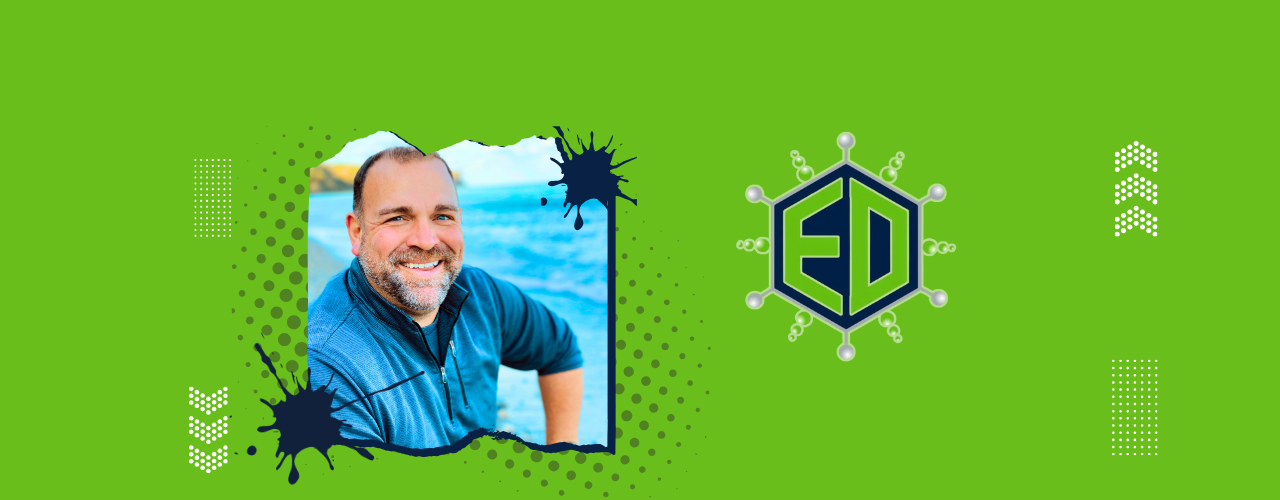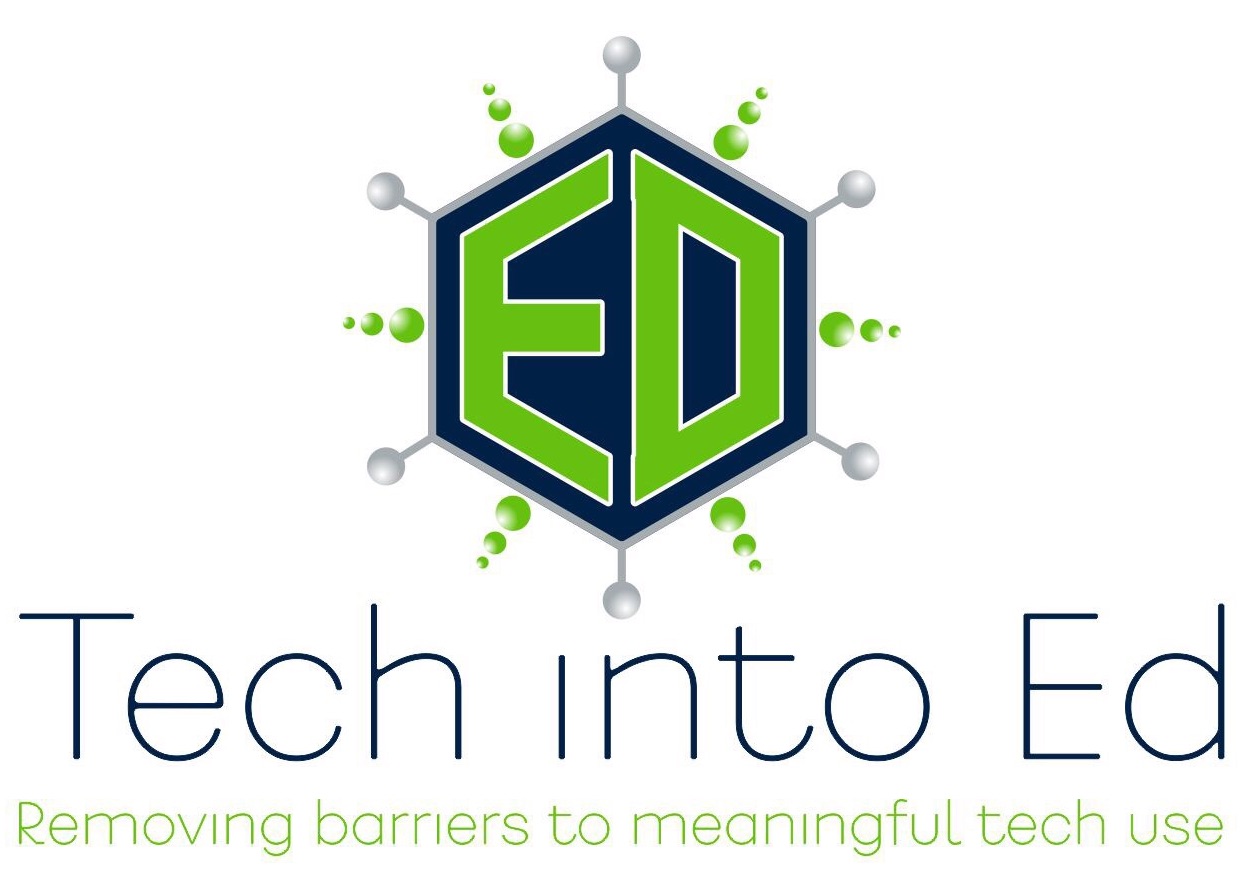
Removing barriers to MEANINGFUL technology use!
YouTube Offering Free Audio Tracks; Aids Users in Following Copyright
Many of us have wrestled with the questions surrounding what constitutes educational use of media as it relates to copyright. While it is important for each of us to come to an understanding of what is appropriate fair use and what isn't in the world of copyrighted material, it is just as important that we begin to have discussions about copyright with our students.
As students publish more of their work for a larger audience, the discussion about copyright becomes a non-negotiable point of instruction that every educator must address. However, our own misinformation about copyright makes that conversation a difficult one to lead and to provide definitive advice to students on.
One resource I particularly appreciat for its simplicity and definitive answers, along with their offerings of pre-formatted lessons on teaching copyright to students, is the Teaching Copyright website (http://www.teachingcopyright.org/). The site isn't filled with so many lessons that you can't manage it all. In fact, the lessons and resources are incredibly direct and to the point -- something that those of us who don't love talking about copyright but know it is critical will appreciate. I'd encourage you to take a look, if only to further inform yourself as an educator prior to engaging in a multimedia project with students.
However, another key to the copyright conversation is helping students to find resources that are marked for full use because they are royalty free or have been given a Creative Commons copyright distinction. There are increasing libraries of these kinds of resources out there, but one notable service is now offering 150+ audio tracks that are free to download and use in media projects because they are truly royalty free!
YouTube recently announced it's expansion of a library of royalty free downloadable audio tracks. The tracks can be searched by genre, mood, instrucment, and track length. It's a great starting point for students to consider as they are looking for just the right feeling in their media project audio. It also allows educators to enter into the conversation about how audio tracks contribute to or detract from the meaning and personality of a piece! What a valuable lesson to engage in. Best of all, you can be certain that as your students share their project with the world, at least the audio portion of the project is safe to publish!
If you are interested in checking out the YouTube library, it's available here: http://www.youtube.com/audiolibrary?feature=ctsbs
Get Connected -- It's Connected Educator Month!
For as many people as a teacher comes into contact with during the day, anybody who has been in the classroom knows that teachers can often feel very isolated from other professionals.
Much of it has to do with the physical design of our school buildings. Much to do with the logistical design of our school day. Part of it is that so much of our day is spent with and preparing for our students that little time (or energy) is left to connect with other adults in meaningful ways.
Where to Start?
So go on -- give it a whirl, make a personal commitment, and see if you can get connected this month.
You Can't Teach Advanced Use of Technology
In today's world, educators tend to take more than their fair share of abuse from the general public, from lawmakers, and even from parents and students. So, when I get a chance to boast of the talents and dedication of the wonderful teachers that I have an opportunity to work with, I take it.
One thing I have always known about my colleagues in education is that we are among the most resourceful and creative professionals that anyone can imagine. As a profession, we are tasked to do an incredibly important job, often without the budget or resources to do that job with ease (I'm talking about the budget of an individual classroom teacher here). Yet, we almost always find a way to get the job done within the budget we are given. This is just one way we demonstrate how creative and resourceful we are (even though it most often goes unnoticed).
Those two skills, resourcefulness and creativity, are essential tools in all aspects of a teacher's world, including the meaningful incorporation of technology.
Last week I started my first session in a three week session on "Advanced Google Use in the Classroom." The name happened naturally and probably without enough consideration. We have a Beginner's Guide to Using Google course, and we needed to offer the next level of that. The Advanced Google Use course was born.
However, advanced use is an absolute misnomer. I have really thought about this, and I just can't come up with a clear definition or an outline of what Advanced Google Apps use actually is. I can come up with examples of how Google Apps can be used in a more complex way, or for more interesting outcomes, but I just cannot put my finger on what I would teach in a course titled "Advanced Google Use in the Classroom" that would be all that much different than what we are teaching in the beginner's level course.
That is likely a sign of the perfect design of the tool set. Google Apps (like other well designed platforms) is easy to use. The skills learned and used in one tool are often closely related to skills you would use in another tool. That quality is probably at the heart of my argument. Once I've taught somebody the concept of sharing (which is truly a beginner level skill in the world of Google Apps), it applies everywhere. Once I've taught them about the auto-generated URLs of all documents in Drive, that skill wraps neatly into every other tool. The same is true of image manipulation, text editing, and even embedding (perhaps a "slightly" more advanced skill, but even that I question).
However, there is significant difference between the way a "beginning" Google Apps user interacts with the Google tools, and the way a more "advanced" Google user utilizes the tools.
If the skills needed to function both as a beginner and an advanced user are nearly the same (and yes, I get that somebody who knows how to script in Spreadsheets has a far more advanced skill than we would teach beginners...that's about the best example I can come up with of a truly advanced skill), the delineation between these two uses has to exist within something the user brings to the experience.
Pinpointing what that special something is might not be as hard as it seems. There seem to be two key elements that a more advanced user has that a beginning user does not.
1. Platform-wide Thinking Related to Product Design
When a user begins to understand how the platform is built, how the tools are inter-related, and how the tools can interact to create a desired "effect," the user can begin to manipulate the tools in a way that they weren't initially intended or that the beginner may not be able to see as possible.
2. Creativity
Once the platform tools are understood, the user can begin to imagine what could be possible, running mental "experiments" on the way tools will perform together before actually developing the final product. In this way, the use is creatively considering what problem needs to be solved or what need must be met, and then developing a way to resolve that issue or meet that need with the
tool set in front of them.
To be honest, this seems to be the advantage that our young people (our "digital natives") have over adults (the "digital immigrants"). They tend to see the inter-relatedness of these products because they have not experienced a world where design wasn't a consideration in the end user experience. They have an expectation that the tools work together, and as a result, they do not have to put much emphasis on first understanding the platform.
With that said, it seems apparent to me that our emphasis needs to be on teaching our "beginners" not only how the products we teach them to use work, but how they are designed to work together. It also seems to me that if we find products that are not designed to work together, we consider if they are a product that is truly necessary in our environment, and if not necessary, we consider removing the product. As Technology Coaches/Coordinators/Integrators, our systems level knowledge of how tools work together mandates us to help remove the hurdle of poorly designed technology from educational environments for the betterment of all!
Once we help our newest users begin to build an understanding of how tools and platforms work together, I know that we will not have to teach "Advanced Tech Use" courses to teachers. They will begin to apply skills that most teachers have learned, developed, and honed innately -- their resourcefulness and creativity. That's the moment I am most excited to see in the teachers that I work with, because that is the moment when all of the frustration and stress about using technology clears and a moment of realization and clarity takes its place. That's the moment they become "advanced" technology users because its the point where the journey stops being about the technology and re-focuses on teaching and learning!
 Taking basic skills and turning them into masterful performances is driven by creativity and resourcefulness.
Taking basic skills and turning them into masterful performances is driven by creativity and resourcefulness.
Who Cares About the Device??
Sometimes I think I am too connected...
I am a part of several list serves (yes those are still used), Twitter, Google+, etc. The one thing that annoys me more than anything is when I have to read things like the following:

1. Device X is so much better than device Y.
2. I would never purchase Device X for
students.
3. Device Y is terrible because it lacks this
feature.
You get the idea...I call it Device Wars
In a 1:1 environment there are 2 critical things:
1. An engaging teacher with rigorous lessons.
2. A device. Any device. Who really cares?
Tech Directors, Tech Coaches, teachers arguing over which device is "better"........iPad, Chromebook, LearnPad...who cares?
Certainly, each device has its positives and negatives. Battery life, selection of Apps, and life of device cost are all factors to take into consideration.
Students need access to information. Students need the ability to create.
Teachers need to adapt and be ready to prepare students for an information rich world. Devices open up a whole new type of teaching and learning.
So, teachers/leaders, stop arguing about which device is better, and focus on improving learning and teaching. The kids are waiting.
Need an Assistant for Grading? Try Flubaroo!
I know that many teachers have uncovered the power of Google Docs and are using the tools in your classroom (or intend to in fall). However, the one certainty about Google tools is that there is always something new to learn.
Now before you freak out and say I'm getting too geeky for you, let me entice you just a bit. If you are interested in assessing your students' knowledge using an online/electronic format (that DOES work on iPads), Google has a tool for that. If you wish to take it one step further and get almost immediate feedback on that assessment (so you can actually plan next steps for your classroom using real time data), there is an easy to use tool for that. It's kind of like having the perfect Teaching Assistant there and available to grade student quizzes for you, and provide a detailed breakdown for each student that will help you to determine what the students truly know.
The first part really is quite easy. It's called Google Forms. This is a powerful tool that has gotten even more powerful in the past few months with a recent update. Google Forms allows you to collect information, to survey people, to assess student knowledge in an easy to build, easy to distribute electronic form. Many teachers have found this tool and swear by it. You may wish to learn to use it for simple tasks, like collecting student information in the first few days of school, collecting parent information so you can have an email list that is actually up-to-date, etc. With just a few simple uses, you'll see the power and find more educationally relevant uses for Google Forms. We have a resource on our Instructional Technology Resources site that will help you to get started with Google Forms: https://sites.google.com/a/waukesha.k12.wi.us/google-apps-in-education/forms
However, the second part, the part that is REALLY enticing, is having something that actually grades your assessments for you in almost no time at all. That is where some of you may get freaked out initially. It really isn't difficult, and you don't need a scripting degree to understand how to use it. However, the terminology does sound scary. I promise -- it really isn't.
As you may already know, the responses that are collected in a Google Form are placed into a spreadsheet. That's how they stay organized and can easily be sorted. However, within Google Spreadsheets is the power to run powerful formulas and scripts. Left to our own devices, most of us would never be able to do this -- we don't have the knowledge. However, some really nice, really teacher-friendly people with scripting knowledge have come to our rescue. They've pre-made scripts that we can simply click on and use without having to understand the coding behind them.
That's where Flubaroo comes in. It is a grading script that teachers can use to quickly assess student mastery of concepts gathered through the use of Google Forms.
I'll start with a video to help you see the general concept behind Flubaroo.

So, you are excited now, but thinking, "There is NO WAY I could that." Guess again. I told you, this is super easy. Flubaroo provides a great series of instructions to help you get started. After doing it a few times, you likely won't need the instructions any more.
To get to the step-by-step instructions, just follow this link: http://www.flubaroo.com/flubaroo-user-guide.
In a few short steps, you'll have your own TA just waiting to help you streamline the process of assessing student learning. Then you can get back to the business of planning meaningful instruction based upon the data you have in front of you.
Remember, you don't need to have students to learn to use this tool. Now would be a great time to quiz your family and friends. Send them a Google Form to find out what they know about you, and then use the Flubaroo script to grade their responses. It may help you to quickly determine who you really want to spend time with this summer!
Ed Tech...its Not About the Tech
I am a tech geek. There is no way around it. I enjoy gadgets, websites, creating, connecting, just about anything that has to do with technology. I have an inherent interest that has allowed me to educate myself. I have no formal training (you might be surprised I would admit that I am self trained, but I am proud of it) ...but I have, much like many of our students today, found a passion. Educational Technology is my passion and I want to give a little insight on how I think that fits into the greater world of education.
As a classroom teacher I always tried to make sure that technology was a part of what I did in the classroom. From using Blackboard to Google Apps and other Web 2.0 tools, I was a staple in the computer lab (much to the dismay of my colleagues who also wanted lab time). To me technology was just a part of the way that I operated in the classroom. It was what I did and wanted for my students, not something extra for me to do in my classroom. But more importantly, before all of that, I felt it was important to have high quality engaging lessons with rock solid relationships with my students that allowed them to become "thinkers" and "creators".
You may or may not be surprised to hear me say this then...Technology is not the answer.
You read that right, in education technology is not the silver bullet we are all waiting for. Its not Khan Academy, its not iPads, its not flipping the classroom, and it is not (insert fad technology here).
The most important part of education reform and increasing student achievement is....drum roll...high quality teachers and lessons that are relevant and ENGAGE students. Sure, there are extenuating factors in a students life, I get that, but high quality lessons that demand that students (spoiler here) think and use real world application skills is the most important thing you do as a teacher. It is not our content, but what student can create with our content.
What does this look like? Well I was inspired by an article I read that talks about promoting deep learning in in students. You can read it here.
So what is the role of technology and education then Mr. I Have a Passion for Educational Technology. Well let me tell you what I think..........
I will use a medicine analogy here. Thirty years ago there were terrific doctors in the world. They were able to diagnose and treat patients with the technology that was available to them at the time. If you took the best doctor from 30 years ago and magically transplanted them to today they would quickly learn the tools they had 30 years ago would not be sufficient today. If the doctor tried to use the same tools as 30 years ago...he would have no patients. His patients would demand the latest technology and current research and theory. However, the great doctors of 30 years ago would adjust to today's world. They would demand and implement current theory, practice, and technology. Not for technologies sake, but because it made them a better doctor.
Don't the students of today deserve to have the most up to date technology and current educational practice?
Technology should just be the way we do things. It should not be an extra thing that teachers have to "fit into" their day. Utilizing the latest technology should become the way that we operate. Example: Blackboard. Our students today demand that they have access to their learning outside of the 60 minutes that you may see them in a day. Colleges, universities, and technical schools use Learning Management System's like Blackboard so that students can have their education outside the walls of the classroom. In fact, many corporate training happens within an LMS. Exposing students to this type of environment is crucial as we prepare them for whatever lies ahead for them after they leave K-12 education.
At first, yes, it might seem like something extra, but we have to meet the needs of today's students. Once you start using an LMS, an online gradebook, or having students create the hope is that it will become part of how you operate as a teacher, not something extra. The goal is communication and access, and the technology allows that to happen.
While technology is not the silver bullet, it is the way things are done in our world today. To ignore it would be a diservice to our students. Embrace technology and its role in the classroom and world today. When you do, you will increase student engagement and help prepare your students for life after high school.
I am sure you have seen the Sir Ken Robinson videos...but if you have not here they are again. Enjoy, they really speak to the urgency of the shift that must happen in education. The first is a follow up to his initial talk. The second has 8 million YouTube views.
Here is the full Changing Paradigm video. No political commentary from me...I just focused on the education part of the video.
My First Year as a Tech Coach
As a classroom teacher one of my strengths was my ability to reflect. I can remember having a lesson 1st hour and then it being completely different by the end of the day based on experiences from my other classes. This provided to be a critical part of my success in the classroom.
It was a great school year. Becoming a technology coach was one of the best decisions of my professional career. It has been fulfilling, engaging, and full of stuff I love (Google, Apple, and helping teachers). We have a lot of work to do in Waukesha and at North. I am so excited to help learn and lead in such an exciting time.


